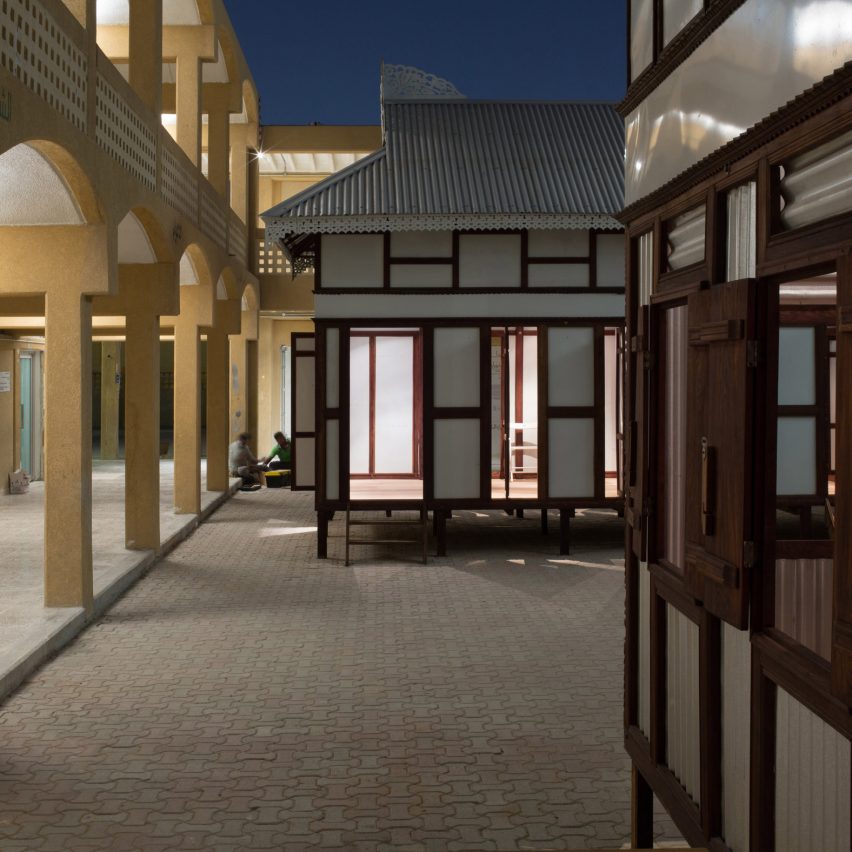
Bangladeshi architect Marina Tabassum has erected three prefabricated houses at the Sharjah Architecture Triennial, to highlight the families that relocate their homes as river channels move within the Bengal Delta.
Tabassum, who won the Aga Khan Award for Architecture in 2016 for the Bait Ur Rouf Mosque, built the houses as part of her Inheriting Wetness installation at the triennial.
Her research is displayed within the three houses. She found that numerous families living near the Padma, Meghna and Jamura rivers own land that can be submerged for years at a time, but is reoccupied when the water recedes.
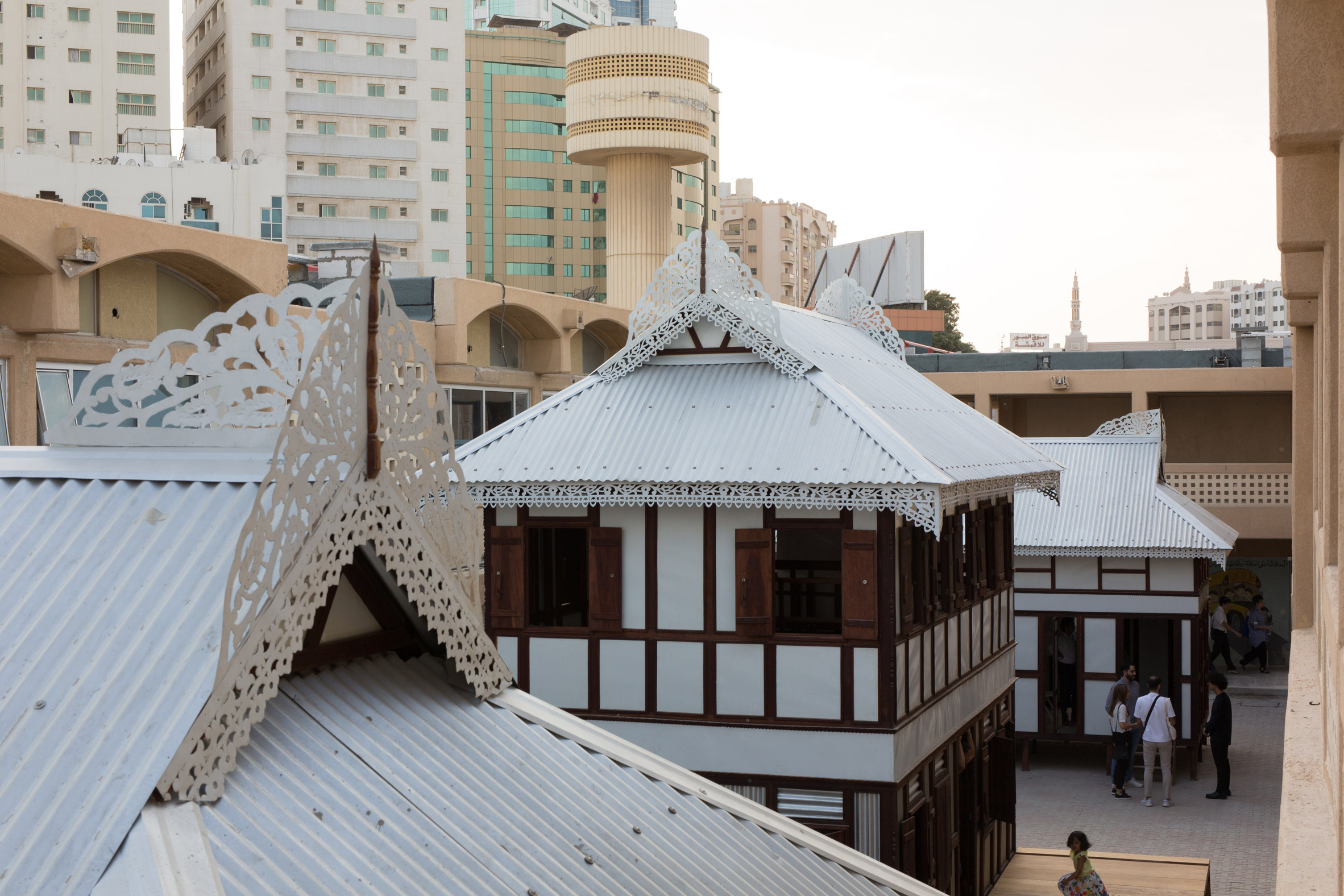
The houses, which can be purchased in kits of parts at markets in Bangladesh, are easy to assemble and disassemble, making them ideal for building on areas that are likely to be flooded.
"The mobility of the system allows people to move their houses to a safer location during the times of erosion," Tabassum told Dezeen.
"The houses are handed down from one generation to the next. We found houses that are more than 60 years old, survived seven erosion [events] and three generations."
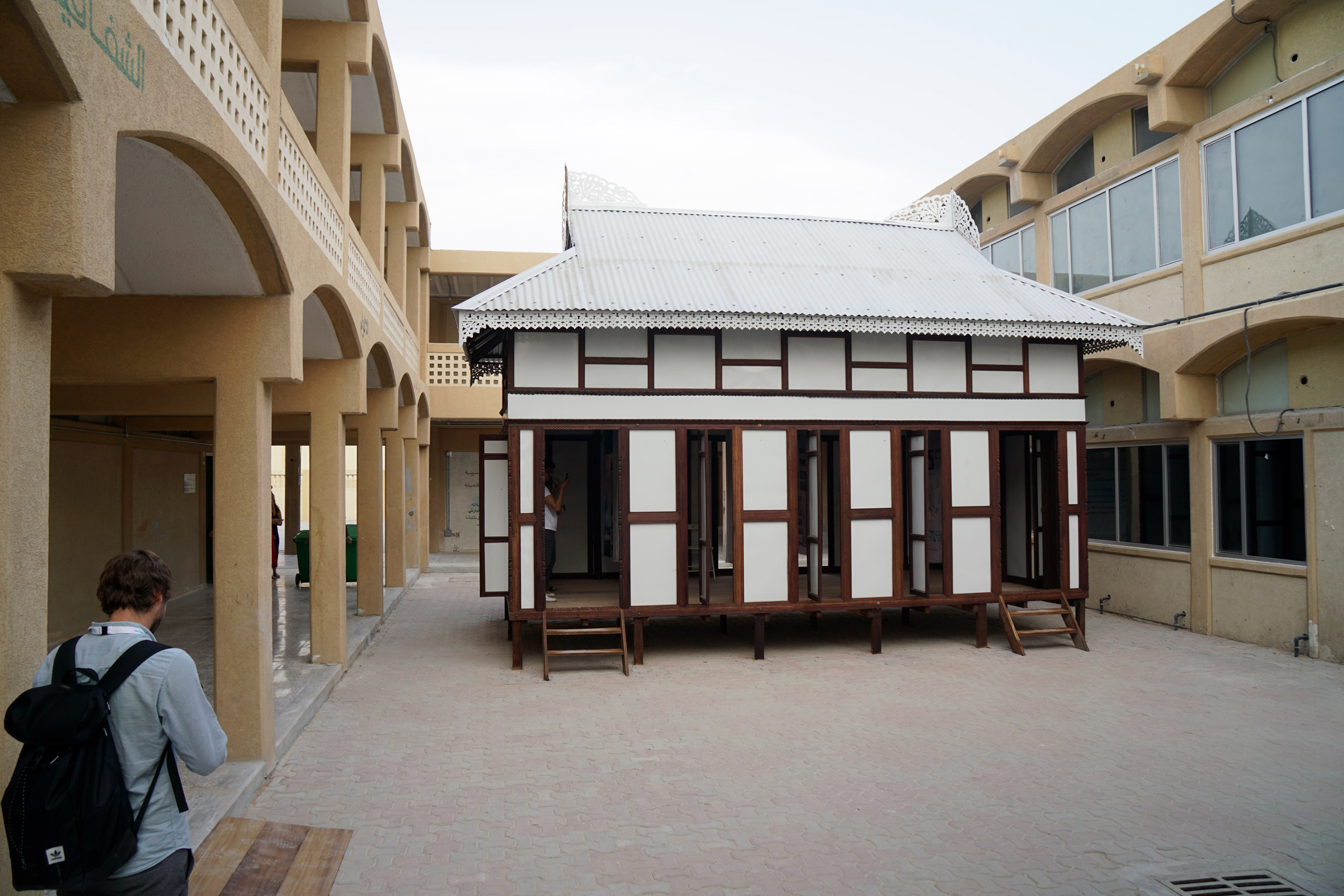
The large amounts of water flowing from the Himalayan mountains means that the river banks within the Bengal Delta often move, with people having to move as land submerges and appears.
Although humans have lived in this area for hundreds of years, land ownership within the region was formalised in the late 19th-century, with plots that can often be underwater passed down from generation to generation.
"Whether the land is physically present or not, the land deeds are handed down from one generation to the next," explained Tabassum.
"The stories and location in the water are also passed on through oral history. So, they wait for the land to emerge."
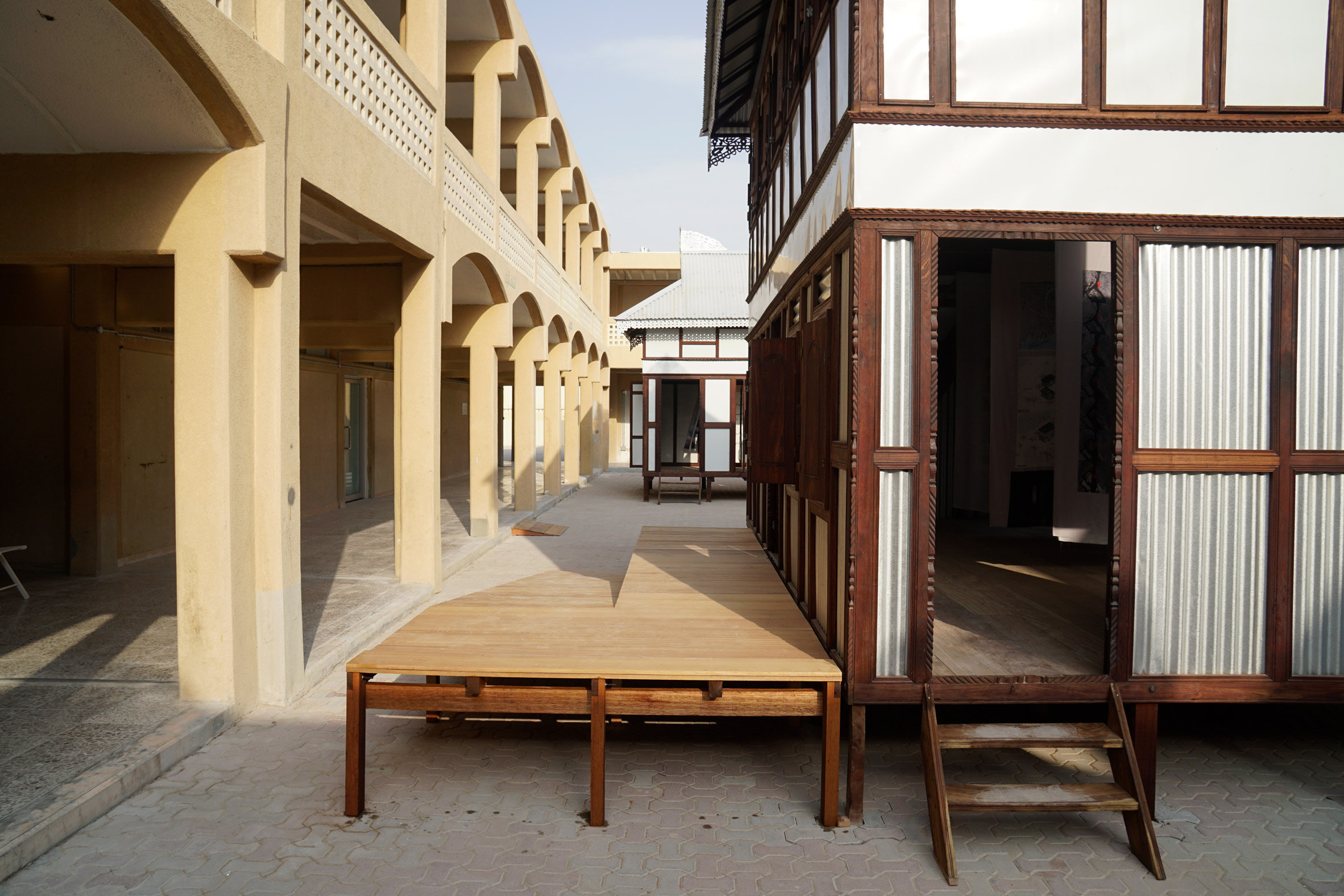
Tabassum describes the definition of land ownership in the region as an "imposition of a dry culture of ownership on a wet culture".
"The Bengal Tenancy Act was established during the British colonial time and allowed the company to lease land to the locals to generate revenue," she said.
"The Cadastral Survey conducted during this time to define boundaries to an otherwise fluid landscape was an imposition of a dry culture of ownership on a wet culture."
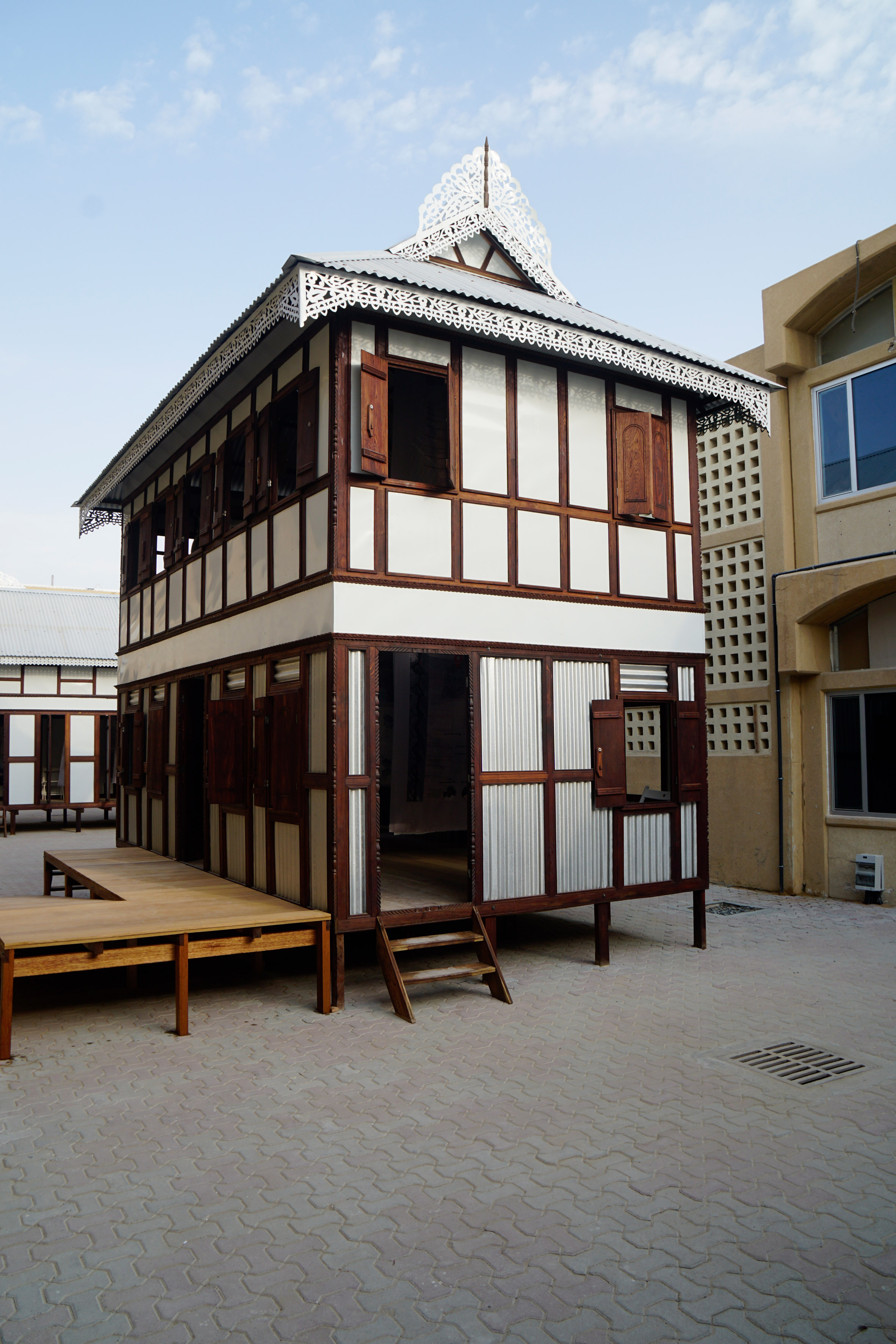
Tabassum believes that a system that tries to define permanent boundaries for the rivers in the region does not work.
"The idea of mapping and drawing lines between water and land needs to be revisited," she explained.
"Lines create a territory of exclusion. When water crosses the line that we drew on a piece of paper, we call it a flood. In reality, it is water's right to be."
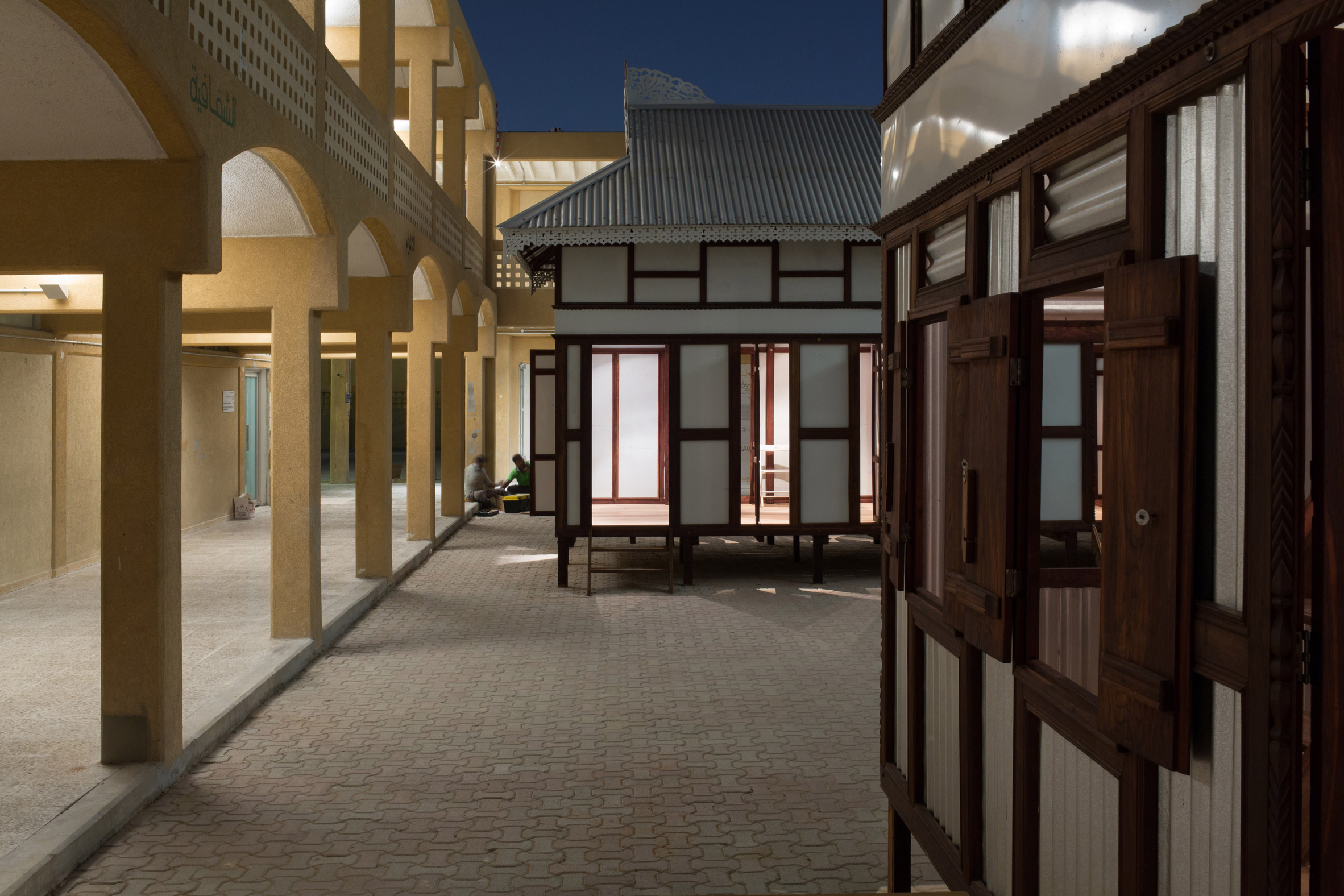
The houses were installed in a refurbished 1970s school in the city of Sharjah as part of the inaugural Sharjah Architecture Triennial, which had a theme of Rights of Future Generations.
With sea-levels across the world protected to rise, Tabassum thinks that life for people living within the Bengal Delta will become harder in coming years.
"The research focused on the topic of inheritance of a fluid landscape," she said.
"It is very much about the future of the generations to come as the sea-level rise poses a challenge that will compound the sufferings of the people in the delta."
The post Marina Tabassum brings prefabricated Bangladeshi homes to Sharjah appeared first on Dezeen.
from Dezeen https://ift.tt/2KkwkvC
No comments:
Post a Comment